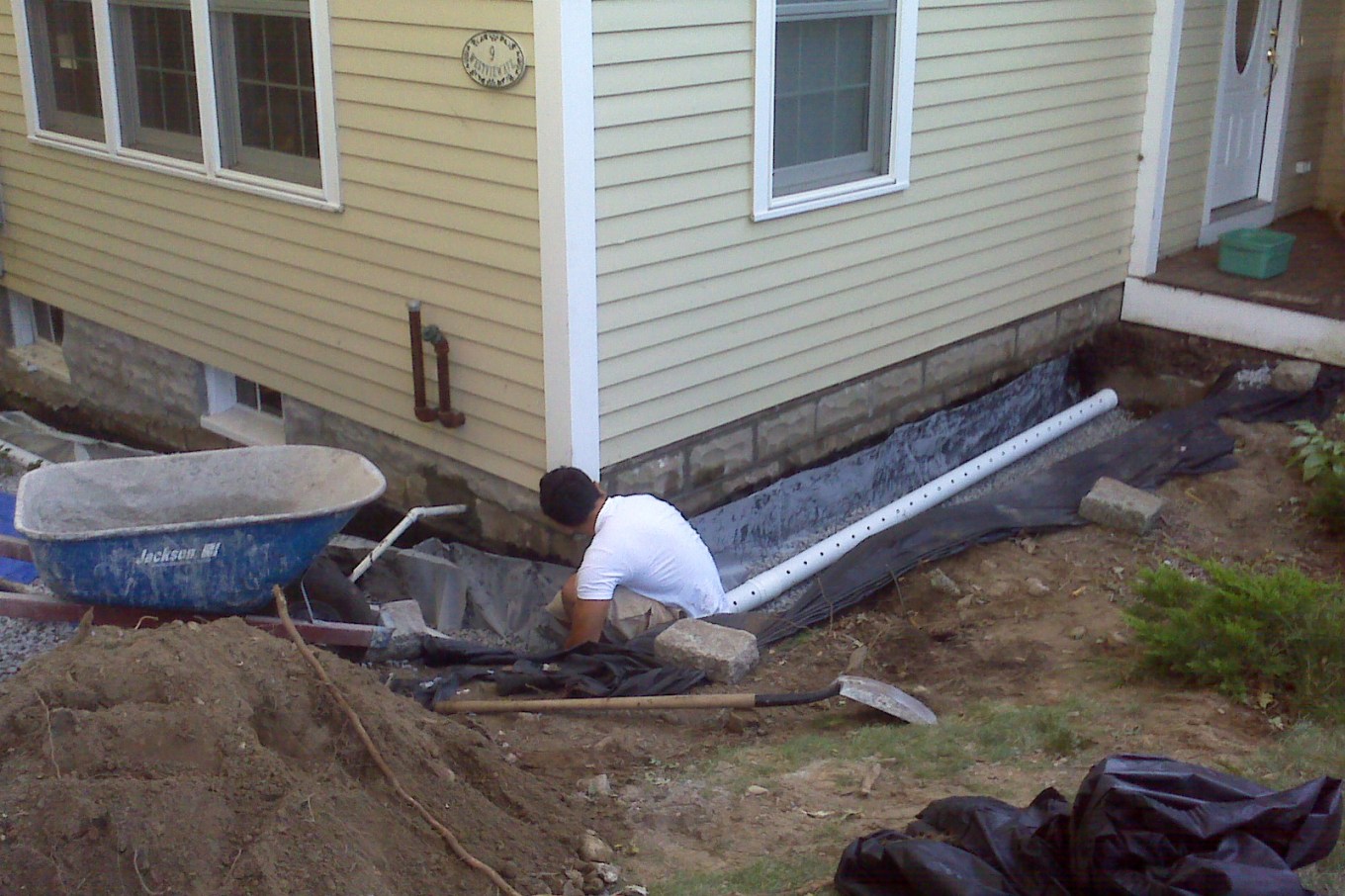After you’ve designed your French drain system, you’re ready to build.
You can do the work yourself or hire a professional landscape contractor to do the job.
Parts of a French Drain
- A trench at least 12 inches wide and 18 to 24 inches deep; larger trenches provide better drainage and last longer but require more work
- Four-inch-diameter perforated plastic drain pipe to collect excess water
- Washed drainage gravel (figure the amount needed with a gravel calculator)
- Water-permeable landscape fabric to prevent silt and roots from entering the drainpipe
Tip: Rigid PVC drainpipe is more expensive (75 cents per foot) than flexible drain pipe (45 cents per foot) and requires glued fittings, but it’s virtually crush-proof. You can use a power snake to clear clogs in rigid PVC, but a snake will ruin flexible pipe.
Before You Dig
- Phone the Call Before You Dig hotline. By dialing 811, you can tap free city services that can mark the location of all underground utilities before you start digging. You can find additional information on digging services at Dig Safe.
- Plan for dirt. You’ll be excavating a large amount of dirt and replacing it with drainage gravel, so you’ll need to figure out where to put your dirt. Suggestions: Fill in low spots, create raised beds, and build up foundation slope.
Digging It
Options for excavating your French drain trench include:
- Dig by hand. It’s labor-intensive but cheap if you do it yourself (enlist a friend or two).
- Rent a trenching tool. A gas-powered, walk-behind trenching tool will cut a trench up to 18 inches deep and 24 inches wide. Cost: $125 to $200 per day. (You’ll need a way to get the tool back and forth to your property.)
- Tip: A trenching tool throws dirt off to the side. Lay pieces of old plywood or a heavy tarp alongside your trench location to catch dirt and make it easier to move it to another location.
- Hire a professional backhoe operator. A backhoe can cut a deep, wide trench quickly, but you’ll need to plan how to get this big, heavy tool into your yard. Including an hourly rate for the operator, travel time to haul the backhoe to your property, and the rental cost of the machine. Expect to pay $300 to $1,500.
How to Install a French Drain
- Call the 811 hotline to have underground utilities marked.
- Dig the trench system.
- Line the trench with landscape fabric. The fabric should be wide enough to extend one foot past the tops of the trench walls on both sides. Temporarily pin the excess in place with nails or landscape fabric pins.
- Add two to three inches of gravel to the bottom of the trench.
- Lay the drainpipe in the trench, with the drain holes facing down.
- Cover the drainpipe with gravel to within two to three inches of the top of the trench.
- Fold the excess landscape fabric over the top of the gravel.
- Fill the top of the trench with soil and reseed with grass.
Related: How to Install a French Drain: DIY or Professional?
